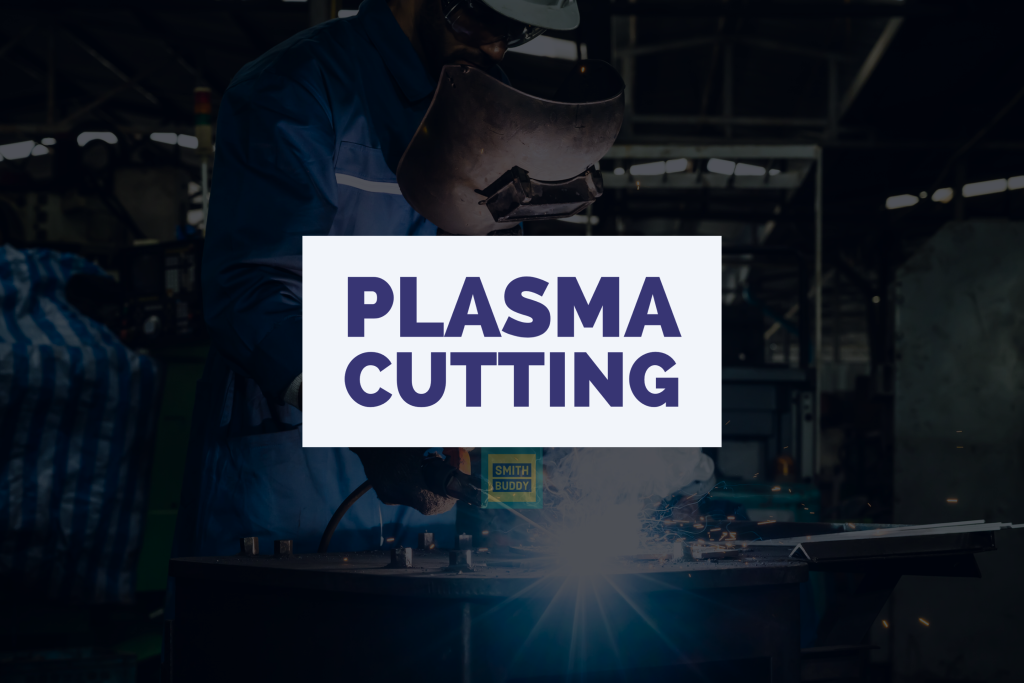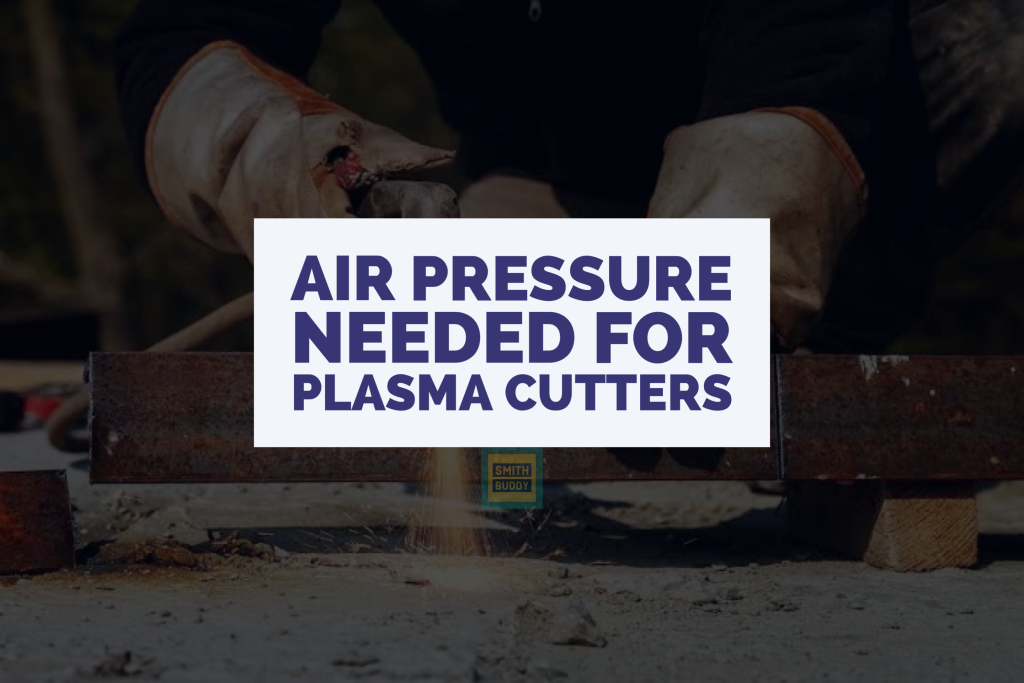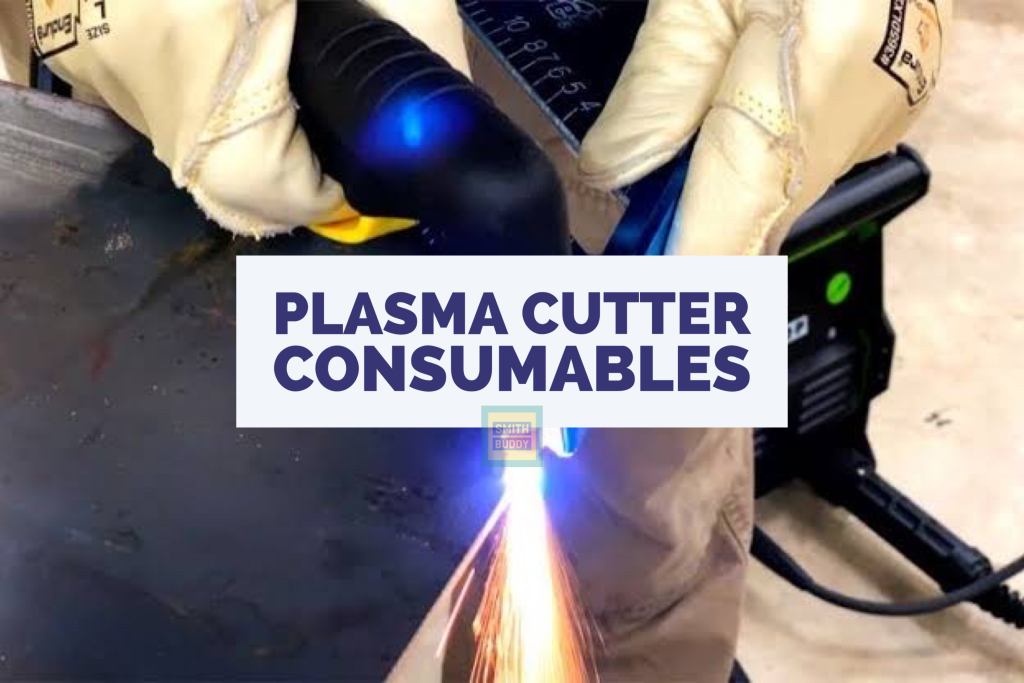This article aims to demonstrate the differences between good welds and bad welds.
The science and art of welding have been the unsung heroes behind the scenes of our daily lives, holding together the buildings we reside in, the cars we drive, and the products we use. This article seeks to delve into the world of welding, focusing on the distinction between good welds and bad welds, their characteristics, causes, and effects on the final product. Through understanding the complexities of welding, we can better appreciate its importance and its critical role in our society. This guide will touch on key aspects of welding techniques and weld quality, two aspects fundamental to achieving a strong and durable weld.
Welding Basics & Importance
Welding is a fabrication process that joins materials, typically metals or thermoplastics, by using high heat to melt the parts together and allowing them to cool, causing fusion. In its essence, welding is about creating a bond that’s as strong, if not stronger than the materials being joined. This bond is pivotal in maintaining the structural integrity of the product or structure, thus reinforcing the paramount importance of welding.
Welding Types
There are various methods of welding, each with its unique set of applications, advantages, and disadvantages. Some of the common welding methods include:
- Shielded Metal Arc Welding (SMAW)
- Gas Metal Arc Welding (GMAW/MIG)
- Flux Cored Arc Welding (FCAW)
- Gas Tungsten Arc Gas Welding (GTAW/TIG)
- Submerged Arc Welding (SAW)
Each of these methods has its specific use-cases and requires different skill sets and equipment to perform effectively.
Shielded Metal Arc Welding (SMAW), commonly known as stick welding, is a manual process using a flux-coated consumable electrode. It’s versatile and can be used with various metals and in different conditions. However, SMAW is slower and requires frequent electrode changes compared to other methods.
Gas Metal Arc Welding (GMAW/MIG) uses a continuously feeding wire electrode and shielding gas, fed through a welding gun. It’s faster and easier to learn than SMAW, suitable for long welds and a range of metal types. However, it’s not ideal for windy conditions as the shielding gas can be blown away, making it less versatile for outdoor use compared to SMAW.
Flux Cored Arc Welding (FCAW) uses a tubular wire electrode with a flux core, eliminating the need for a separate shielding gas. It’s faster than SMAW and GMAW, can be used in all positions, and is well-suited for thick materials. FCAW is excellent for outdoor use due to its adaptability to different environments.
Gas Tungsten Arc Welding (GTAW/TIG) uses a non-consumable tungsten electrode and an external shielding gas, offering the cleanest and highest quality welds. This method is more complex and slower than the others, but it provides precise control, making it ideal for thin materials and intricate designs.
Submerged Arc Welding (SAW) involves forming an arc between a continuously fed wire and the workpiece, submerged under a flux blanket that protects it from the surrounding environment. It provides deep weld penetration and high welding speeds, but its main drawback is it can only be used in the flat or horizontal position. This makes it less versatile compared to the others, but highly efficient for specific applications.

Safety Precautions of welding
Safety is paramount in welding, given the high-risk nature of the work. Some crucial safety measures to always follow are:
- Using appropriate Personal Protective Equipment (PPE), such as helmets with protective lenses, flame-resistant gloves, and safety shoes.
- Ensuring proper ventilation as welding can produce harmful fumes.
- Keeping the work area clean and free from flammable materials.
- Regular inspection and maintenance of welding equipment.
In conclusion, welding is a critical process with significant implications for the products and structures we use every day. Understanding its basics and the difference between good and bad welds can provide a wealth of knowledge to both the professional welder and the curious reader.
Characteristics of a Good Weld
A good weld is much more than just a bond between two pieces of metal. It represents the epitome of craftsmanship, technical skill, and a keen eye for detail. There are several characteristics that define a good weld:

Uniformity: A good weld displays consistent width along its length, indicating that the welding speed and motion have been controlled precisely.
Lack of Porosity: Good welds have a lack of porosity, which means no small holes or cavities caused by gas pockets. Porosity weakens the weld and can lead to failure.
Appropriate Penetration: Proper penetration is achieved when the weld metal fully fuses with the base metal. A good weld should have a controlled and consistent depth of penetration.
No Undercutting: Undercutting refers to a groove melted into the base metal adjacent to the toe of the weld and left unfilled by weld metal. A good weld will not have any undercutting.
Techniques for Achieving Good Welds
Achieving a good weld not only requires technical knowledge of welding procedures but also an understanding of material properties, preparation techniques, and proper welding sequence. Here are some techniques to achieve good welds:
Proper Preparation: This includes cleaning the base metal to remove any rust, oil, dirt, or paint and properly fitting up the joints for welding.
Choosing the Right Welding Method: Different projects require different welding methods. The right choice depends on the material type, material thickness, position of welding, and available equipment.
Controlled Heat Input: Managing the heat input during welding is crucial for preventing distortion and maintaining the mechanical properties of the material.
Examples of Good welds
Let’s consider a case study of constructing a pressure vessel, a container designed to hold gases or liquids at a pressure substantially different from the ambient pressure. The materials used are often carbon steel and stainless steel, which require high-quality welds to maintain the structural integrity of the vessel under high pressure.
In one instance, a company producing these pressure vessels significantly reduced weld failures and rework (from 30% to less than 5%) by implementing proper joint preparation, choosing the right welding method (in this case, Gas Tungsten Arc Welding for its precise control), and ensuring a controlled heat input.
By adhering to the characteristics and techniques discussed above, they ensured the welds were of high quality — uniform, free of porosity, with proper penetration, and no undercutting — leading to durable, reliable pressure vessels. The case highlights the importance of skill and knowledge in achieving good welds, underscoring its significance in industrial applications.
Identifying Bad Welds
Welding defects can greatly compromise a structure’s integrity, making it crucial to identify and address them promptly. Some common welding defects include:

Porosity: This defect occurs when gas becomes trapped in the weld metal, resulting in cavities or holes. Porosity can significantly weaken the weld and cause it to fail under pressure or load.
Undercutting: Undercutting is a groove that melts into the base metal at the edge of the weld and is not filled with welding material. This defect reduces the cross-sectional thickness, making the weld weak.
Lack of Fusion: Lack of fusion happens when the weld metal doesn’t fully merge with the base metal or preceding weld bead. This can lead to weld failure under stress.
Cracks: Cracks can occur in various forms in a weld, including longitudinal, transverse, crater, and underbead cracks. They are the most dangerous defects as they can cause sudden and catastrophic failure.
Causes of bad welds
Several factors contribute to bad welds, such as:
Improper Technique: Rushing the welding process, improper arc length, wrong angle of travel can all lead to defects.
Incorrect Settings: Incorrect voltage, amperage, or wire feed speed can result in lack of penetration, porosity, or other defects.
Contaminated Base Metal or Filler Material: Presence of rust, dirt, oil, paint on the base metal or filler material can cause porosity and lack of fusion.
Examples & Case studies
An infamous example of the disastrous effects of bad welding is the Silver Bridge collapse in 1967. This suspension bridge across the Ohio River in the United States failed during peak traffic, leading to 46 fatalities. Investigation into the disaster revealed a tiny 0.1-inch (2.5 mm) deep crack, caused by improper welding technique, had expanded over time due to repeated stress from traffic loads. This event, while tragic, underscores the critical importance of good welding practices and proactive identification and repair of bad welds.
According to the American Welding Society, approximately 50% of rework items in the fabrication industry are due to welding defects, underscoring the importance of skilled welders, rigorous quality control, and continuous training.
How Good Welds Enhance Structure and Durability
Good welds have profound implications for the strength, functionality, and longevity of a structure. Here’s how they contribute:
Structural Integrity: Good welds ensure that the joined materials share loads evenly across the weld, maintaining structural integrity even under stress and strain.
Resistance to Corrosion and Wear: A properly executed weld can protect the base metals from corrosion and wear, leading to an increase in the lifespan of the product or structure.
Appearance and Aesthetics: Good welds not only fulfill functional needs but also enhance the aesthetic appeal of structures, especially in visible applications like furniture or automotive design.
For instance, in the construction of skyscrapers, bridges, or ships, good welds ensure that the structures can withstand various stresses like wind forces, traffic loads, or harsh sea conditions, respectively. These welds need to be flawless to ensure the safety and longevity of these large structures.
Consequences of Bad Welds on Structures
Bad welds can have severe consequences on structures and systems, including:
Structural Failure: Bad welds can compromise a structure’s strength, leading to catastrophic failures, as seen in the Silver Bridge collapse.
Reduced Lifespan: Defects like cracks, porosity, and undercutting can speed up wear and tear, leading to premature failures and reducing the structure’s lifespan.
Increased Maintenance and Repair Costs: Structures with bad welds often require frequent maintenance and repairs, leading to increased long-term costs.
A practical example would be in the automotive industry, where a poor weld in the car’s body or chassis could lead to a severe safety hazard. If the weld fails, it could cause parts to detach while driving, potentially leading to accidents.
In summary, the importance of good welding practices can’t be overemphasized. Good welds enhance the durability and performance of structures, while bad welds can lead to catastrophic consequences, posing safety risks and leading to increased costs.
Preventing Bad Welds
These are the ways that helps in preventing bad welds.
Training and Skill Development
The importance of adequate training and skill development for welders cannot be overstated. It’s the first step in preventing bad welds. According to the American Welding Society, a significant percentage of welding defects can be attributed to a lack of proper training. Investing in training programs can lead to a substantial reduction in rework and failure rates. For instance, a study conducted by the Welding Institute indicated that businesses that invested in proper training and certification for their welders saw a decrease in defects by up to 60%.
Skilled welders understand the nuances of different welding processes, the characteristics of various metals, and how to adjust their techniques accordingly. They can properly set up welding machines for different applications, ensuring optimal voltage, amperage, and wire feed speed. Moreover, they can identify and correct potential issues before they lead to bad welds.
Quality Control and Inspection Techniques
Regular inspection and quality control are essential to preventing bad welds. Visual inspection is the most common method and can identify many common defects like undercuts, overlaps, and excessive or insufficient weld sizes. However, more sophisticated techniques are often necessary for critical applications.
Non-destructive testing (NDT) methods, such as ultrasonic testing, radiographic testing, and magnetic particle testing, can detect internal defects that aren’t visible to the naked eye. According to the National Association of Corrosion Engineers (NACE), implementing regular NDT inspections can prevent up to 95% of potential failures due to bad welds.
For effective quality control, inspections should be conducted at different stages: before welding (to check joint design and cleanliness), during welding (to ensure correct technique and parameters), and after welding (to detect and assess defects). The implementation of stringent quality control can significantly reduce the risk and occurrence of bad welds.
Latest Welding Technologies
These are the latest welding technology that addresses the bad welds.
Innovations in Welding Techniques
Innovations in welding technology are evolving rapidly, providing more precision, efficiency, and consistency. Here are some examples:
Friction Stir Welding (FSW): This solid-state joining technique uses frictional heat combined with precisely controlled forging pressure to produce high-quality, defect-free welds. It’s primarily used for aluminium and is commonly used in the aerospace and automotive industries.
Laser Hybrid Welding: This technology combines the deep penetration of laser welding with the gap-tolerance of arc welding, providing high welding speeds and deep penetration. It is useful in shipbuilding and the automotive industry.
Cold Metal Transfer (CMT): This method reduces heat input, allowing for welding of thinner materials and reducing distortion. It’s particularly beneficial in the automotive and sheet metal industries.
How Modern Technology is Improving Welding
Advancements in technology are making welding more efficient, accurate, and safer. Some examples include:
Robotic Welding: Robotic welding systems are now common in the manufacturing industry, providing high precision, consistency, and productivity. According to the International Federation of Robotics, robotic welding systems in the US increased by 5% in 2022 compared to the previous year, indicating growing adoption of this technology.
Augmented Reality (AR) and Virtual Reality (VR) in Welding Training: AR and VR technologies are increasingly being used for training welders, providing a safe and efficient learning environment. A study from Iowa State University showed that students trained with VR technology performed 30% faster and were 40% more efficient than traditional training methods.
AI and Machine Learning: AI technologies are being used to monitor welding processes in real-time, predict potential defects, and adjust parameters on-the-fly to improve the quality of welds. A research paper published by the Journal of Manufacturing Systems in 2023 highlighted a 20% increase in welding efficiency using AI-based welding systems.
In summary, the welding industry is benefitting significantly from technological advancements, providing more efficient, high-quality, and precise welding processes. These advancements are not only improving welding outcomes but also transforming the skills and knowledge required by welders.
Conclusion
Understanding the difference between good and bad welds is paramount in the welding industry. It not only affects the quality and safety of the products and structures we use daily but also has a substantial impact on the economic efficiency of manufacturing and construction processes.
Good welds, characterized by uniformity, proper penetration, lack of porosity, and absence of undercutting, ensure structural integrity, enhance durability, and improve aesthetic appeal. In contrast, bad welds, identifiable by common defects like porosity, undercutting, lack of fusion, and cracks, can lead to catastrophic failures, reduced lifespan of structures, and increased maintenance and repair costs.
Prevention of bad welds largely hinges on adequate training, skill development, and effective quality control measures. Investments in these areas have been shown to significantly reduce defects and improve the quality of welds.
Meanwhile, the advent of new welding technologies, including advanced welding techniques and the integration of AI, robotics, and AR/VR in welding processes, offer promising avenues for further improving the quality of welds, reducing defects, and increasing efficiency.
In the final analysis, the “Good Weld vs Bad Weld” discussion goes beyond technical jargon and industry-specific concerns. It underscores the central role of craftsmanship, skill, and technology in creating safe and reliable structures that underpin our modern world. As such, promoting good welding practices and embracing technological advancements in this field should be a priority for us all.





